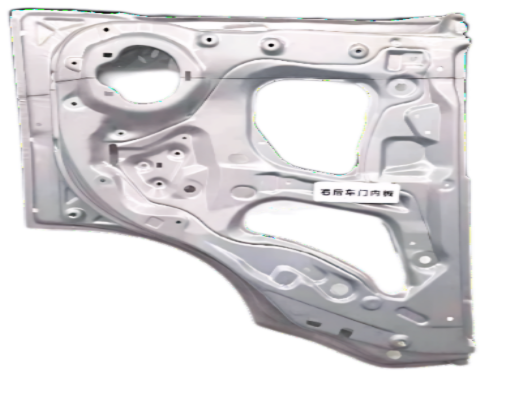1. The Transformation of Modern Manufacturing with Metal Stamping Service
1.1 Why metal stamping service matters
As a procurement professional, you need manufacturing solutions that balance cost, delivery, and quality. A dedicated metal stamping service provides high-throughput production of metal components while maintaining dimensional accuracy and repeatability.
Metal stamping converts sheet metal into finished shapes through dedicated dies and presses. When you plan production for automotive, electronics, or heavy machinery, stamping reduces per-unit cost, shortens cycle time, and limits material scrap—advantages that directly impact your total procurement cost and supply predictability.
1.2 Shoujia’s role in modern manufacturing
Shoujia Group integrates stamping, welding, assembly, and inspection so you receive parts that are ready for installation. The integrated model shortens lead time, simplifies logistics, and reduces supplier coordination overhead for your team.
| Capability | Specification |
|---|---|
| Factory area | Over 600 acres of modern manufacturing facilities across multiple regions in China |
| Press capacity | 63T–400T mechanical presses (with larger-tonnage presses available for heavy parts) |
| Annual output | More than 80 million stamped components |
| Experience | 20+ years in automotive and industrial manufacturing |
| Major clients | BYD, Geely, Dongfeng, Great Wall, SAIC and other OEMs |
| Certifications | IATF16949, ISO 9001 |
For your procurement plans, these capabilities mean steady volume handling, engineering support, and quality controls you can rely on for long-term programs.
2. Understanding Metal Stamping Service and Its Core Process
2.1 What the metal stamping service includes
When you contract a metal stamping service, expect a sequence of engineered operations that convert sheet metal into functional components. Typical operations include blanking, punching, bending/forming, coining, and embossing. Each operation requires a purpose-built die, correct material selection, and stable press parameters to meet tolerance and surface requirements.
2.2 Typical production workflow (what you should expect)
Design & engineering: part-for-manufacture (DFM) review, tooling layout and tolerance definition.
Tooling & mold development: die manufacturing and trial runs to validate cycle time and quality.
Pilot production: short runs to confirm process capability and inspection criteria.
Mass production: automated feeding, robotic handling and continuous monitoring.
Post-processing & inspection: deburring, surface treatment, 3D measurement and batch documentation.
2.3 Materials commonly processed
| Material | Key characteristics | Typical applications |
|---|---|---|
| Carbon steel | High strength, cost-effective | Chassis brackets, reinforcements |
| Stainless steel | Corrosion resistant, durable | Exhaust components, appliances |
| Aluminum | Lightweight, good formability | Body panels, heat dissipation parts |
| Copper / Brass | Excellent electrical conductivity | Connectors, terminals |
2.4 Shoujia’s process controls
Shoujia applies digital inspection (CMM and optical measurement), routine gauge R&R and standardized process audits. You should expect batch traceability, documented process parameters, and rapid corrective actions when nonconformance appears. These controls reduce variation and protect your end-product assembly integrity.
3. Why Global Buyers Choose Metal Stamping Service Over Other Processes
3.1 Comparative overview for procurement decisions
| Method | Production speed | Typical precision | Material waste | Best suited for |
|---|---|---|---|---|
| Metal stamping | Very high | Excellent (±0.05 mm achievable) | Very low | High-volume sheet-metal parts |
| CNC machining | Moderate | Excellent | Moderate to high | Low-volume precision components |
| Laser cutting | Medium | Good | Medium | Prototyping and small runs |
| Die casting | High | Good | Moderate | Thick-wall, non-sheet components |
3.2 Procurement-focused advantages of stamping
Lower unit cost at scale: tooling amortization reduces per-piece cost as volume increases.
Faster cycle times: stamping can produce parts in seconds once the process is validated.
High repeatability: identical parts across long production runs lower assembly rework for you.
Integrated value chain: suppliers like Shoujia combine tooling, stamping, welding and inspection to reduce handoffs.
4. Key Benefits for Procurement and Supply Chain Efficiency
4.1 Cost control and long-term savings
For programs with steady demand, you will see rapid cost improvements after initial tooling investment. Your total landed cost benefits from lower per-unit pricing, reduced scrap, and simplified logistics when parts are supplied as assemblies rather than loose components.
4.2 Quality assurance and process stability
Expect documented inspection checkpoints, full batch traceability, and continuous process monitoring. Shoujia maintains regular gauge calibration and R&R tests, and follows IATF16949 practices that align with automotive OEM expectations.
4.3 Lead-time reduction and logistics simplification
When you source a metal stamping service that also offers welding and assembly, you reduce inbound logistics steps and simplify supplier management. Shoujia’s in-house tooling and integrated lines shorten turnaround for both initial prototypes and mass production.
4.4 Supply continuity and geographic diversification
Multiple production bases across China enable capacity distribution and risk mitigation. If you need production shifted or scaled, a supplier network that includes Shoujia’s multiple plants provides flexibility to meet your schedule and volume requirements.
5. Major Industrial Applications of Metal Stamping Service
Metal stamping service applies across sectors where sheet-metal components are essential. Below are typical applications with how Shoujia serves each area.
| Industry | Common components | How Shoujia supports you |
|---|---|---|
| Automotive | Brackets, reinforcements, body panels, mounting plates | High-volume stamping lines, robotic welding integration, IATF-compliant quality processes |
| Electronics | Connector plates, shields, heat sinks | Precision micro-stamping, tight tolerance control and surface treatment |
| Home appliances | Housings, panels, reinforcing brackets | Sheet metal forming and surface finishing compatible with consumer standards |
| Heavy equipment | Structural supports, mounts | Large-tonnage presses and robust welding/assembly stations |
| Aerospace | Lightweight aluminum subassemblies | Specialized material handling and precision inspection |
6. How to Select the Right Metal Stamping Service Provider
When you evaluate a stamping supplier, apply selection criteria that match production complexity and program length. The following checklist helps you compare providers objectively.
6.1 Supplier evaluation checklist
Press range & capacity: can they handle your part size and annual volume?
Tooling & die expertise: do they own in-house mold design and trial capability?
Quality systems: are they IATF16949 / ISO 9001 certified and do they produce inspection records?
Integration: can they provide welding, assembly, surface treatment or other value-add services?
Engineering support: is DFM guidance provided to reduce cost and simplify assembly?
Supply resilience: do they have multiple plants or backup capacity for critical programs?
6.2 Shoujia's strengths relevant to your procurement
| Evaluation factor | Shoujia capability |
|---|---|
| Tooling development | Independent design and mold manufacturing workshop |
| Press range | 63T–400T and heavy presses for structural parts |
| Automation | Robotic feeding and welding lines, automated inspection |
| Engineering team | 500+ technical staff covering design, process and quality |
| Capacity | 80+ million stamped parts per year |
7. Case Studies: Real-World Projects
7.1 Automotive supplier programs (BYD and Dongfeng)
Shoujia supplies automotive stamping and welded assemblies for chassis and structural systems. In long-running programs with BYD and Dongfeng, Shoujia delivered hundreds of thousands of components annually while maintaining tight dimensional tolerance and high on-time delivery rates.
Annual volume: 500,000+ components
Dimensional accuracy: maintained within ±0.05 mm
On-time delivery rate: 98%
Typical defect rate: below 0.2%
7.2 DEWAN Pakistan — turnkey welding line project
In 2024 Shoujia completed the JS21 welding line turnkey project for DEWAN in Pakistan. The scope covered design, manufacture, assembly, tooling development and on-site commissioning — demonstrating capability for international project delivery and after-sales support.
| Scope item | Details |
|---|---|
| Main & sub welding lines | Design, production and assembly |
| Fixtures | 64 sets developed for the line |
| Auxiliary devices | 15 sets supplied and integrated |
| Services | Installation, debugging and after-sales support |
8. The Future of Metal Stamping Service in Smart Manufacturing
The direction of metal stamping service is toward digitized, networked and automated production. As you plan future sourcing, consider suppliers that invest in smart tooling, automation and energy efficiency.
8.1 Key trends you should monitor
Smart tooling: sensors and data capture enable predictive maintenance and reduce unplanned downtime.
Robot-assisted handling: improves precision while reducing labor variability and safety risk.
End-to-end integration: stamping combined with welding/assembly lowers transfer defects and logistics cost.
Sustainability: optimized nesting, improved material yield and energy-efficient presses reduce your environmental footprint and cost.
Shoujia continues to deploy five-axis laser cutting machines, robotic welding lines and automated inspection to provide smarter, more resilient manufacturing for you.
9. Partnering with Shoujia for Your Metal Stamping Needs
9.1 Why Shoujia is a practical choice
Founded in 2002, Shoujia Group has expanded into a multi-factory operation supporting automotive OEMs and component suppliers. The company adheres to the principle of Customer First · Quality First · Technology Driven, and offers end-to-end production capabilities that reduce your supplier count and lower program risk.
| Item | Detail |
|---|---|
| Industry experience | 22+ years |
| Engineering staff | 500+ technical professionals |
| Patents | 39 technology patents |
| Product lines | Stamping, pipe fittings, rubber & plastic, mold inspection fixtures, welding assembly, high-pressure tubing |
| Production capacity | Stamping: 80 million+ pieces annually; multiple stamping and welding lines |
9.2 Benefits you receive
One-stop manufacturing: tooling, stamping, welding, assembly and inspection in coordinated workflows.
Quality assurance: IATF16949 and ISO practices backed by documented measurement and traceability.
Cost competitiveness: vertical integration reduces intermediaries and lowers overall unit cost.
Global project capability: experience with turnkey projects and export logistics for international buyers.
















